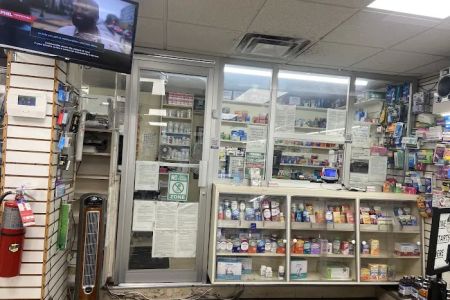How to Manage Multiple Prescriptions Safely
Managing multiple prescriptions can be overwhelming, especially when you're juggling different medications, dosages, and schedules. When I first found myself in this situation, I realized how easy it is to accidentally miss a dose or mix up medications. However, with the right approach and strategies, managing multiple prescriptions can be made much easier and safer. Over the years, I’ve learned some valuable tips and practices that have helped me stay on top of my medications. If you’re dealing with multiple prescriptions, these steps can help you ensure your health is properly managed without unnecessary stress.
1. Create a Medication List
The first thing I did when I was prescribed multiple medications was to create a comprehensive list. Having all my medications in one place helps me keep track of what I’m taking and ensures I don’t miss anything important. I recommend you write down the name of each medication, its dosage, frequency, and the reason it was prescribed. This way, you’ll have a quick reference guide for yourself and your healthcare providers.
1.1 Why a Medication List is Essential
A medication list is essential because it helps you avoid drug interactions and keeps your doctors informed. I remember when I had to consult a new specialist, they were able to make informed decisions about my treatment because I had all my medications clearly listed. This can prevent dangerous drug interactions and help healthcare professionals provide the best care for you.
1.2 How to Update Your Medication List
As medications change, it’s important to regularly update your list. Whenever I start a new medication or stop one, I update my list immediately. Keeping an up-to-date list also makes it easier for pharmacists to spot potential issues when filling prescriptions, such as duplicate medications or dosage errors.
2. Organize Your Medications
Organizing my medications by type and frequency was one of the most helpful things I did. There are several ways to organize your medications, such as using a weekly pill organizer or storing them in labeled compartments. I found that using a pill organizer with compartments for each day of the week made it easy to keep track of whether I had taken my medications.
2.1 Using a Pill Organizer
A pill organizer helps me ensure that I’m taking the right medications at the right time. I use a daily pillbox for medications that I take multiple times a day, and a weekly pill organizer for those I take once a day. This method prevents confusion and ensures I don’t miss any doses. Plus, it’s an easy way to track if I’ve already taken a dose, especially when I’m busy or traveling.
2.2 Labeling and Storing Medications Properly
Proper storage of medications is crucial to ensure they remain effective. I make sure to store my medications according to the directions on the label—whether that means keeping them in a cool, dry place or in the refrigerator. It’s important to keep medications in their original containers to avoid confusion. If you need to keep several medications organized, you could use a container with clear labels, so you know exactly what you’re taking and when.
3. Set Reminders for Each Medication
When managing multiple prescriptions, it can be easy to forget when it’s time to take each medication. I learned that setting reminders on my phone or using a medication management app was an excellent way to ensure I never missed a dose. There are also some specialized apps designed specifically for medication tracking, which I found particularly useful for staying on track.
3.1 Medication Reminder Apps
There are several apps that can help you manage your medications, such as Medisafe or MyTherapy. These apps send you notifications when it’s time to take your meds, and some even allow you to track side effects, refills, and appointments. I’ve used these apps to set reminders for my prescriptions, and they’ve helped me stay on top of everything without relying on my memory.
3.2 Manual Reminders
If apps aren’t your thing, you can always go the traditional route with manual reminders. I used to write reminders on sticky notes and place them where I could easily see them—on the fridge or bathroom mirror. This simple method can be just as effective if you need something visual to prompt you to take your medication.
4. Communicate Regularly with Your Doctor and Pharmacist
One of the best ways to ensure safe and effective management of multiple prescriptions is to communicate regularly with your healthcare team. When I had several prescriptions to manage, I made sure to keep my primary doctor and pharmacist updated about any changes in my medications. This open communication helps prevent potential drug interactions and ensures my treatment plan is up to date.
4.1 Ask Questions about Side Effects
If you’re unsure about the side effects of your medications, it’s important to ask your doctor or pharmacist. When I started a new medication, I always asked about potential side effects and interactions with my other prescriptions. It’s better to be informed and prepared than to deal with unexpected issues. For example, I once found out that one of my medications could increase the effects of another one, and with my doctor’s advice, I adjusted the timing to avoid this interaction.
4.2 Keep Your Doctor Informed of Any New Medications
Every time I visit a new specialist or start a new medication, I make it a priority to inform my regular doctor. This helps ensure that all of my prescriptions are coordinated and that my doctor can evaluate how well the medications are working together. It’s also a good idea to ask your pharmacist for advice on potential drug interactions when filling new prescriptions.
5. Be Mindful of Potential Drug Interactions
Managing multiple prescriptions means being aware of potential drug interactions. I’ve learned that certain medications can interact in ways that make them less effective or even harmful. I always double-check with my pharmacist if I’m starting a new medication, especially if it’s something I haven’t taken before.
5.1 Use a Medication Interaction Checker
There are online tools and apps available that allow you to check for potential drug interactions before taking new medications. For example, websites like Drugs.com provide an interaction checker where you can input all your medications and check if there are any harmful interactions. I’ve used this tool several times to ensure my medications don’t negatively interact with one another.
5.2 Know When to Seek Help
If you experience unusual side effects or feel that your medications aren't working well together, don’t hesitate to contact your doctor or pharmacist. I once had an episode where I felt unusually drowsy after starting a new medication, and my doctor was able to adjust the dosage, making me feel much better. Always trust your instincts and seek help if something doesn’t feel right.
SEO Title: How to Manage Multiple Prescriptions Safely
SEO Keywords: managing prescriptions, safe medication management, multiple prescriptions, medication management tips, prescription safety
SEO Description: Learn how to manage multiple prescriptions safely with these helpful tips. Discover ways to stay organized, avoid drug interactions, and ensure your medications are working effectively.














